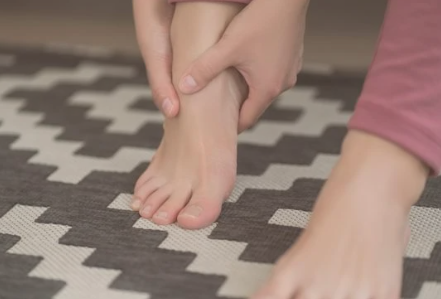Reiter’s Syndrome & Ankylosing Spondylitis
Reiter’s syndrome, also known as reactive arthritis, and ankylosing spondylitis are both rheumatic conditions that affect the musculoskeletal system, often involving joints, tendons and the spine. Here’s an overview of each condition:
Reiter’s Syndrome (Reactive Arthritis):
Reiter’s syndrome is a type of reactive arthritis triggered by an infection in another part of the body, usually the urinary tract, gastrointestinal tract or genitals. It is characterized by the classic triad of symptoms, which includes:
- Arthritis: Joint inflammation, typically involving the lower extremities (knees, ankles, feet). The joints become swollen, painful and may have limited mobility.
- Urethritis: Inflammation of the urethra, leading to pain and discomfort during urination.
- Conjunctivitis: Inflammation of the eyes, causing redness, pain and discharge.
Other symptoms may include skin rashes, mouth ulcers and inflammation of other areas such as the spine, causing lower back pain. Reiter’s syndrome often occurs after a bacterial infection, most commonly from organisms like Chlamydia, Salmonella or Shigella.
Ankylosing Spondylitis (AS):
Ankylosing spondylitis is a chronic inflammatory condition that primarily affects the spine and sacroiliac joints, causing pain, stiffness and potentially leading to fusion of the spine. Key features include:
- Back Pain: Persistent and progressive lower back pain and stiffness, often worse in the morning or after periods of inactivity.
- Reduced Spinal Mobility: Over time, the inflammation can lead to the fusion of vertebrae in the spine, causing decreased flexibility and potential curvature of the spine (kyphosis).
- Extra-Articular Manifestations: AS can also involve other joints, tendons and organs, leading to conditions like enthesitis (inflammation of tendons or ligaments) or anterior uveitis (eye inflammation).
AS is an autoimmune condition with a strong genetic predisposition. It typically develops in early adulthood and progresses over time, potentially leading to severe spinal limitations.
Heel pain can be a symptom associated with both Reiter’s syndrome and ankylosing spondylitis due to their effects on the musculoskeletal system.
Connection Between Reiter’s Syndrome and Ankylosing Spondylitis:
Reiter’s syndrome has been associated with a higher risk of developing ankylosing spondylitis, especially in individuals with the genetic marker HLA-B27. However, not everyone with Reiter’s syndrome will develop AS.
Both conditions fall under the category of spondyloarthritis and share some clinical features, including inflammatory joint involvement. They are managed through a combination of medications, physical therapy and lifestyle modifications aimed at reducing inflammation, managing symptoms as well as preserving joint function.
Hence, it’s crucial to consult with a healthcare professional for accurate diagnosis, treatment and management of these conditions. As early intervention and appropriate care can help alleviate symptoms and prevent complications.
Are you suffering from any foot condition? At The Chelsea Clinic, we can help. One of our podiatrist can assist and then recommend what treatments are best to get you back on track. Podiatrist South Kensington
Schedule an appointment here or you may call us at +44 (0) 207 101 4000.
We hope you have a feetastic day!
-The Chelsea Clinic and Team




